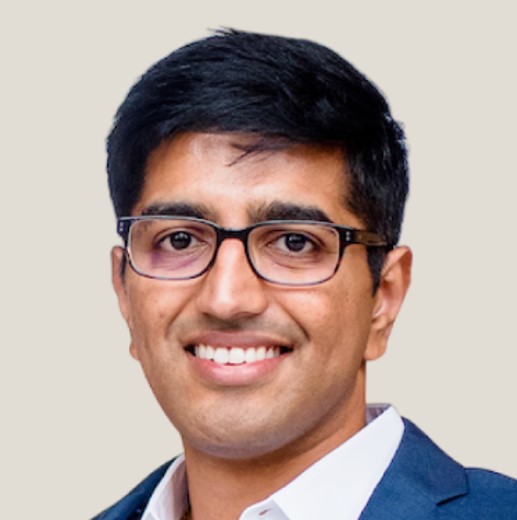Wealth Strategies
Equity Concentration Risk And How To Solve It: Another Look

Concentration risk in portfolios is at high levels, and the recent market selloffs have focused minds on how to avoid the problem, or fix it.
Shortly before President Donald Trump announced sweeping tariffs on April 2, a move that hit US equities – adding to earlier falls in Big Tech stocks – it reminded investors about “concentration risk” in portfolios.
The selloff has been significant. Chipmaker Nvidia, for example, is down 17.2 per cent from the start of January 2025; Tesla has sunk 24.3 per cent; Alphabet is down by 13 per cent; Amazon is down by 23.7 per cent; Meta is down by 0.4 per cent; Apple has slid by 15.8 per cent. Microsoft has managed to buck the trend, up 4 per cent this year. For the S&P 500 Index of US stocks, it is down 3.0 per cent since the start of this year. (Figures as of May 2.)
Concentration within the S&P 500 Index of US stocks is at the highest point for half a century, with 10 companies representing around 40 per cent of the index by market capitalization.
There are several ways for investors to deal with this. Those who already hold these stocks can sell and diversify, or they can hold an "equal-weighted" approach that avoids the trap of market-cap biases that come from the performance of a handful of stocks.
The idea of holding a fund that replicates the performance of an equal-weighted index of stocks is one way for investors to avoid concentration risk, or they can hold such a fund as a counterweight to a market-cap exposure if they want.
As an example of what is on offer, at the start of April, Tema ETFs announced the launch of the Tema S&P 500 Historical Weight ETF Strategy (“DSPY”), now trading on the New York Stock Exchange. DSPY seeks to reflect the S&P 500 but adjusts company weightings to match the S&P 500's average concentration level since 1989. The top 10 holdings in DSPY seek to represent 22 per cent of the total exposure, whereas the top 10 constituents in the S&P 500 represent 39 per cent of the index.
Tema says this DSPY is the first innovation addressing S&P 500 concentration since the S&P 500 Equal Weight exchange-traded fund launched in 2003. A benefit, it says, is that DSPY avoids the rigidity of a concentration cap which for example S&P 500 equal weight has, and thereby has a more dynamic approach to concentration.
Other routes
So what other options do people have?
A few weeks ago, we carried these views from Srikanth Narayan, (pictured) who is the founder and CEO of Cache, a San Francisco-headquartered RIA fintech that he says offers a tax-friendly solution to handle concentrated stock solutions.

Srikanth Narayan
Narayan, who founded Cache in 2022, has worked at tech powerhouses such as ride-hailing app Uber, giving him an insight into risks that employees face if they are compensated, in part, by company stock.
The traditional choices – sell and take a major tax hit or hold on and face a major concentration risk – are not great options.
“Concentration risk is the silent threat to wealth preservation. Holding too much of your net worth in a single stock – no matter how promising – leaves individuals dangerously exposed to market shocks, company-specific risks, and sector downturns. Most people don’t realize that the most probable outcome for a concentrated position over time is underperforming the market,” he told this publication.
And family offices are vulnerable, particularly where their principals acquired their wealth from company stocks from their own business' post-IPO, for example.
“This is about taking risk off the table,” Narayan said. “Concentration risk is a topic that has been known about forever.”
In the US, using company stock as a compensation route is commonplace, and some holders may not be fully aware of the pitfalls.
Bearing this in mind is particularly important because employee share ownership can be a way of binding employees to a long-term vision of a business; it can also be a means of ensuring a smooth transition once founders move on. For example, Employee Stock Ownership Plans, or ESOPs, are retirement plans and employee benefit schemes where a company provides employees with ownership in the company. There are 6,548 ESOPs in the US, holding total assets of over $1.8 trillion. The number of unique companies with an ESOP is approximately 6,358 (5,925 private companies and 433 publicly traded companies). A company may sponsor multiple plans. (Source: National Center for Employee Ownership.)
“Compensation culture has been democratized in the US,” Narayan said. “Many [senior figures] have a large amount of compensation in stocks. Up to 90 per cent of compensation can be in stocks.”
Figures show that in general, C-suite ownership of stock in relative terms is not high, but in certain cases, it is significant as a share of the total. A report by the Harvard Law School Forum on Corporate Governance (2018) said that more than half (52.6 per cent) of Russell 3000 CEOs have less than 1 per cent stock ownership of their company and 33.0 per cent of Russell 3000 CEOs have between 1 per cent and 5 per cent ownership. The report said 3.6 per cent of Russell 3000 CEOs own more than a quarter of their company shares.
Ensuring that this exposure does not go wrong requires vigilance, Narayan said.
“You [in exposure to such stock] need to be on top of this and manage that risk…when wealth was surging no-one had talked to them about this,” he said.
One consideration is that executives of firms who are compensated with corporate stock will have a strong emotional bond to the firms they lead and build, Narayan continued.
“Last year, there were a lot of people taking risk off the table…there were others saying 'I should have done this sooner'," he said.
Narayan said a tax-friendly way to handle concentrated stock holdings is swap funds. These funds – sometimes also called exchange funds – are an investment vehicle that allows investors with large, concentrated holdings in a single stock to diversify their portfolio without setting off a taxable event by swapping those shares for shares in a diversified fund. A problem in the past, however, has been that these funds require high minimums and fees, putting them beyond the reach of ordinary clients. Exchange funds have been around in some form since the 1930s, with firms such as Morgan Stanley and Goldman Sachs operating in the area.
“Exchange funds have been around for a while, but they were traditionally reserved for ultra-wealthy clients at private banks. We’re rethinking the model to make it more accessible, more transparent, and a lot easier to use for today’s generation of equity holders – especially tech employees, founders, and early investors,” Narayan said.
“The traditional exchange fund experience is slow, opaque, and high-friction. At Cache, we’ve used technology to simplify everything – from onboarding to portfolio management – so that exchange funds are available to anyone who needs them, not just those who happen to know the right private banker. We make the process feel like a few simple steps, while handling the complexity behind the scenes. Our technology also helps keep costs down, which we pass on to customers through lower fees,” he continued.
Narayan said Cache offers those who want to use exchange funds lower minimums designed for a broader range of high net worth individuals; its funds are open to accredited investors and qualified purchases; there are more frequent fund closings (bi-weekly, instead of quarterly or semi-annual), and there is higher capacity for high-growth stocks because Cache focuses on the Nasdaq 100 universe of stocks.
Cache, which charges management fees on the funds it runs, partners with BNY, Bank of America, Cantor Fitzgerald, NAV Fund Services, and others. It is backed by venture capital firms such as Quiet Capital, First Round Capital, and more than 50 angel investors in the US. The team at Cache – fewer than 20 at this point – includes alumni from Uber, Wealthfront, Alphabet, Goldman Sachs, Amazon, JP Morgan among others.
Narayan concluded by stating why concentration risk is a big deal.
“Managing concentration risk requires thinking rationally, not emotionally. It’s easy to feel attached to the company that created your wealth, but diversification is ultimately about protecting that wealth for the long term. And the problem is only getting bigger – stock-based compensation is a larger part of how people are paid today, especially in tech and growth industries.
“The traditional wealth management industry has been slow to highlight concentration risk because selling stock can create taxes, and legacy diversification tools were either too clunky or too exclusive. At Cache, we’re working to change that – both by building greater awareness and by making solutions that used to be reserved for the ultra-wealthy more accessible to a broader range of people. We believe true wealth isn’t just built – it has to be protected,” Narayan said.